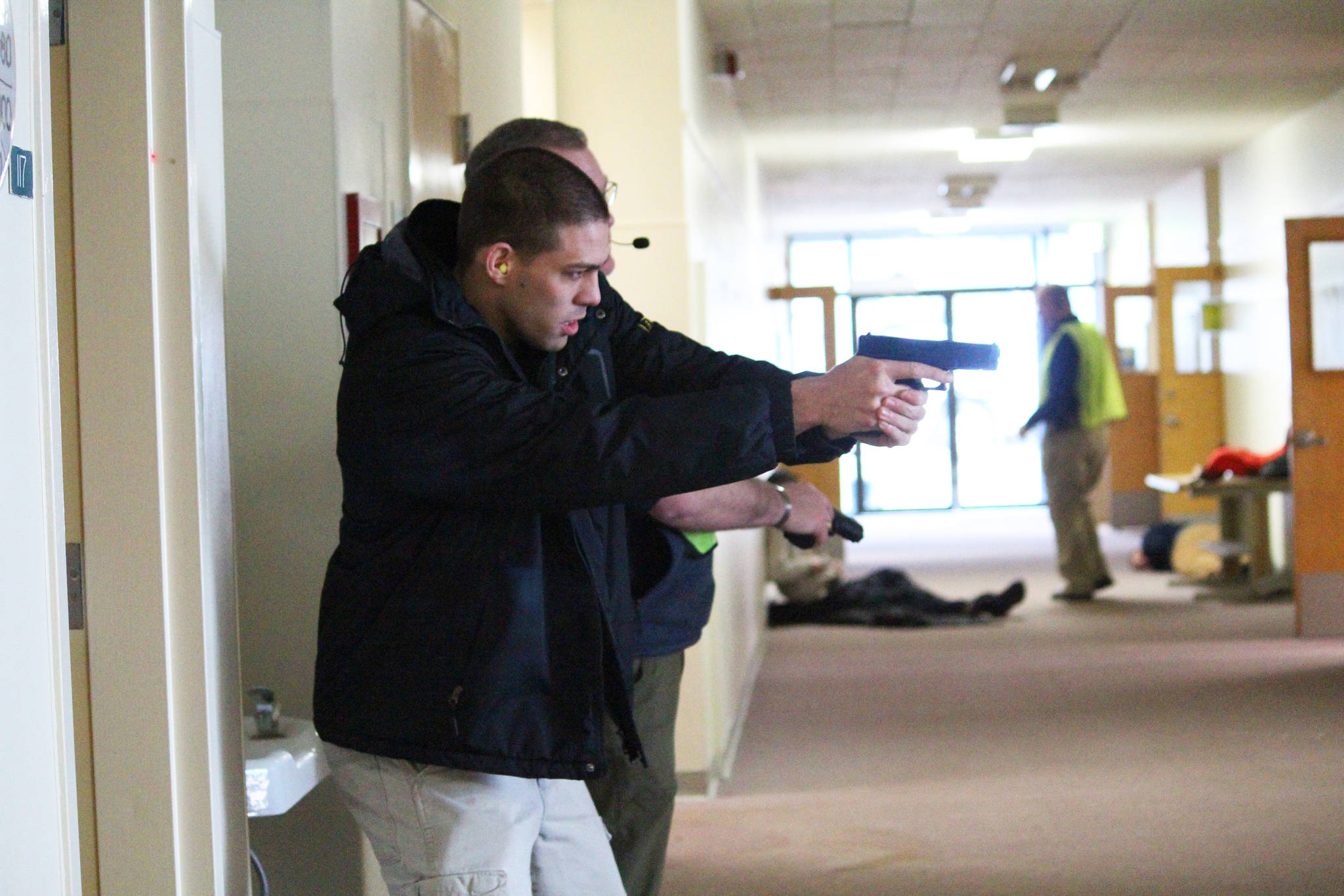Sometimes old habits die hard, but local law enforcement and first responder agencies are working to change theirs when it comes to addressing highly dangerous situations.
The National Center for Biomedical Research and Training provided a three-day class to help the two groups of responders adapt the way they handle deadly calls, like active shooter situations. Part of Louisiana State University, the center sends instructors to teach the class all over the country. This is the first time this particular course has ever been taught in Alaska, said Homer Volunteer Fire Department Chief Bob Painter, who applied for the course to be brought to Homer when he saw it advertised.
Firefighters, medics and officers spent two days hashing out curriculum and lectures before putting their knowledge to the test on Friday with four dangerous situation scenarios played out in the HERC building in town. In each simulation — each of which were some variation of an active shooter situation — the responders practiced an integrated approach where medics went in along with the police officers.
This training reflects a nationwide trend in shifting the way first responders handle dangerous calls. JTM Training Group, a Las Vegas-based company that provides training around the world, has come to Alaska for the last six years to provide a course designed to teach the same integrated approach through a federal preparedness grant.
“Basically, going back and doing critiques of incidents like at Columbine, where they used the old-school technique of isolate, surround, attempt to make contact, if the perpetrator’s inside negotiate hopefully a peaceful resolution to the situation. The Columbine incident kind of changed the mentality of hostage taking and negotiation to going in with the goal being to wound or kill as many people as possible,” Painter said. “And we’ve seen those incidents increasing nationwide, and so … the law enforcement community … basically said, ‘Old school can’t work anymore.’”
While medical responders wait for members of law enforcement to enter one end of a building, for example, and clear it room by room before they can enter to treat wounded people, they lose valuable time, Painter said.
“What we want to do is address the potential for the situation,” he said. “And that is getting EMS providers in with law enforcement officers that provide them the protection so they can do what we do, and that’s take care of the injured and get them out to a safe zone where we can then load them in an ambulance and get them to the hospital for definitive care. You can’t take care of gunshot wounds on scene.”
Through the course, police officers also learned some techniques used by medics, Painter said. This allows them to potentially save their own lives of the life of a colleague if they are injured during a dangerous response like an active shooter.
Emergency medical services members are also taught about safety, and how to do their jobs under the protection of the officers as they enter buildings that haven’t been cleared yet. There are even some departments in the country arming their medical first responders with bullet-proof vests, Painter said.
Gerry Flood, the lead trainer for Friday’s exercise, said the class went over tactics including how to use a tourniquet for both medical and law enforcement responders.
Having an integrated response between multiple agencies is called a warm zone, Flood said.
“It’s all revolving around having an integrated response between your law enforcement, your fire and your medical services to make sure that you have the most expedient response you can have to save lives,” he said.


